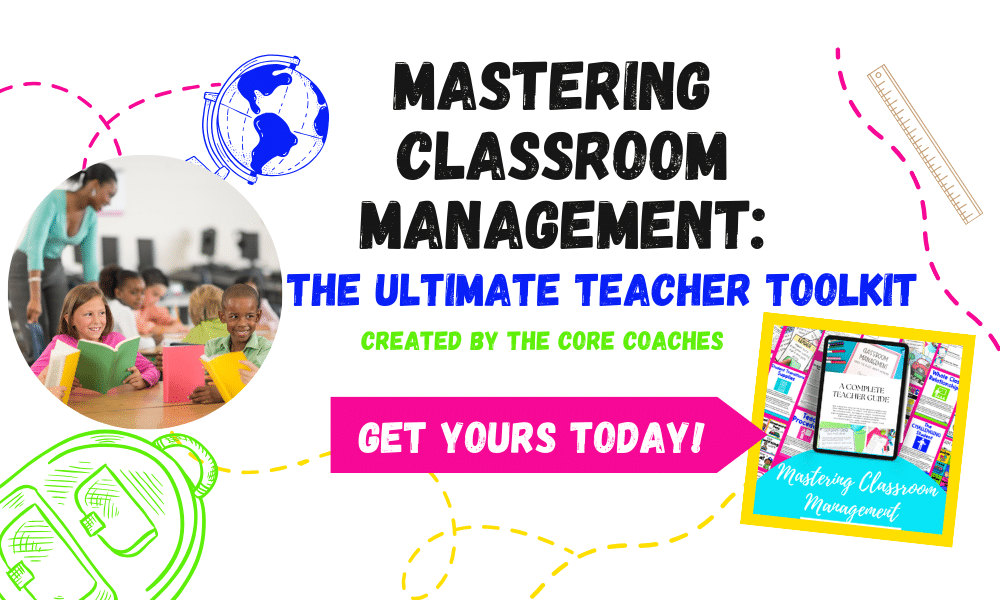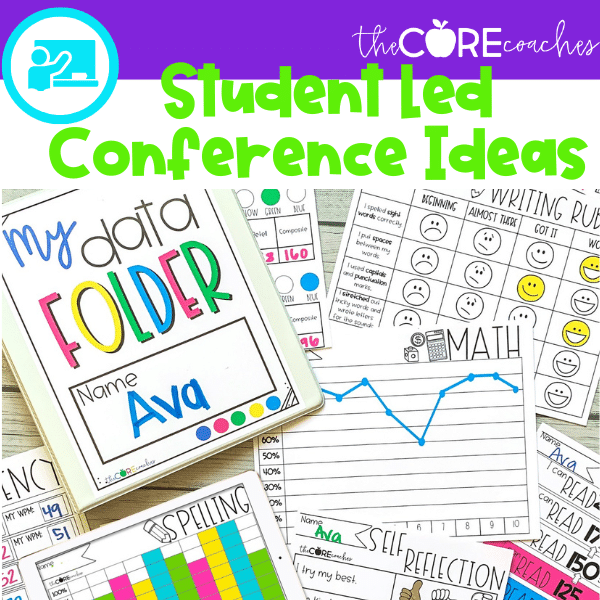As a teacher you know all too well that teaching is more than just academics. While the goal is to instill education into your students, that can only happen if students are able to learn. Moreover, it can only occur if you are able to teach. This is why one of the most important pieces of effective teaching is effective classroom management.
The goal of classroom management is to create and maintain an effective learning environment. It takes several things to make this happen. It also goes beyond classroom rules.
Effective classroom management begins with focusing on building positive relationships, as well as a positive physical classroom environment. It also includes finding the best strategy for implementing effective routines and procedures in your classroom. Classroom management also includes strategies designed to create student engagement.
In addition to the areas of focus mentioned above, behavior management is also essential to a well-managed classroom.
Download our mastering classroom management e-book Today!
The Importance of Behavior Management Strategies
It seems like there is always a new strategy being taught as part of professional development. Therefore, some of the strategies may seem quite similar. This is often true when it comes to behavior management strategies and classroom management strategies.
It may even seem like they are the same thing. However, while one supports the other, classroom management and behavior management have some differences.
Classroom management focuses on how the classroom is run. This includes all the areas mentioned above, such as building positive relationships between each student, and time management.
Within each area of classroom management, there are strategies that naturally help manage behavior by managing the classroom. For example, one classroom management strategy for time management is to use a timer to move from one activity to the next.
The intent behind this strategy is to keep students focused on the transition so that class time is being used effectively. However, by quickly moving students from one activity to the next, behavior is inadvertently being managed as well. Students are too focused on the transition to get distracted and misbehave.
While a classroom management strategy may help reinforce positive behavior, there is still a need for specific behavior management strategies.
Behavior management strategies are created to explicitly manage student behavior. This includes managing the behavior of the whole class and individual students.
Behavior Management Protocols
Traditionally, behavior management focused on the negative behavior and consequences. This was the original way of managing behavior. Over the years, this slowly began to shift. Today, the focus is mostly on how to manage student behavior through positive behavioral interventions.
You may even be a part of a school that uses a specific behavior management protocol suchs as PBIS. These protocols and systems are great at shifting the focus from negative behavior to positive behavior. When shifting to a focus on positive behavior though, it is important to recognize it is not simply about rewarding students.
While rewards may be a fun part of a specific behavior management strategy, rewarding the behavior is not the most important piece. The most important thing is to teach the behavior!
We cannot expect students to understand what good behavior is unless we explicitly teach it to them.
Behavior Management Strategies
When you already have so many subjects to cover as a teacher, taking time to create a lesson plan for teaching expected behaviors may feel like the last thing you want to do. It may even feel like something that is not necessary.
However, while behaviors are not something students are formally tested on, they may be more important than the core subjects. This is simply because teachers cannot teach if students are misbehaving.

So, even though it can feel like it is taking time away from learning, teaching behavior expectations will further improve student learning.
You should not have to take personal time to create extra lesson plans though! Especially if you are already dealing with a difficult student or behavior issue.
Enter behavior buddies! 5 fun buddies created to share their stories about five areas of behavior that are essential in the elementary classroom.
- Listening Llama
- Respectful Rooster
- Good Gorilla
- Shout Out Sloth
- Tattling Toucan
How to Be a Good Listener
Listening may seem like a natural skill. Teachers know that it does not come easily or naturally to all students though. Therefore, effective listening skills need to be explicitly taught.
Moreover, teaching students how to be good listeners is a skill that will also help them beyond the classroom.
In this first story from the behavior buddy series, Listening Llama has to learn how to pay attention. Through Listening Llama’s story, students learn what paying attention looks and sounds like.
In addition, once students get to know this behavior buddy, it is so easy to reference the positive behavior you are seeking throughout the year. Simply say “Be a Listening Llama” and they will quickly remember the lessons they learned from these classroom activities.
How to Be Respectful
Teaching students how to be respectful is a great strategy that teaches the appropriate behavior, rather than waiting to reprimand the misbehavior.
While respect is one of the most important behaviors to teach, it can be difficult for students to fully understand. That’s why using a behavior buddy is so helpful.
Respectful Rooster gives students a clear example of what it looks like to be respectful. This provides students with a tangible connection that supports their understanding of this behavior. Therefore, once students know Respectful Rooster, you can “Be a Respectful Rooster” when you notice a negative behavior.
How to Make Good Choices
Teachers are responsible for teaching students more than just academics. Particularly, elementary teachers who are the first to teach kids about big ideas like how to make good choices.
Teaching students about making good choices is a big thing to take on. Good Gorilla is the perfect buddy to help you with this task!
Good Gorilla is part of our classroom behavior buddy series. Throughout the story, Good Gorilla learns how to make good choices. Then students dive deeper into this idea of how to make choices through the supporting activities.
Students will love getting to know Good Gorilla, and you will love how he supports good behavior in your classroom! Simply say “Be a Good Gorilla” when you want to remind students of the behavior expectations.
How to Wait to Speak
It is up for debate, but shouting out may be the most disruptive behavior issue teachers deal with. It can also be a tricky behavior to manage.
If a student is sharing their ideas, but just not aware of how to do that at an appropriate time, you don’t want to give them a consequence. This may result in the student feeling discouraged and not sharing in the future. Therefore, it is important to teach clear classroom expectations on how to share ideas, without shouting out!
Shout Out Sloth is here to help you! In this cute story, Shout Out Sloth learns how to stop blurting things out in class. Along with reading Sloth’s story, students get to participate in learning activities that further help them understand this behavior problem and how to change it.
How to Tell the Difference Between Tattling and Reporting
Teaching students the difference between tattling and reporting is a behavior that often gets overlooked. It is one that is super important though. We don’t want students tattling on silly things that are not necessary. On the other hand, we want to make sure students know how to report serious situations. Moreover, to know they are safe to do so.
This is where Tattling Toucan comes in, to help you explain the difference between tattling and reporting. Once students get to know this behavior buddy, it is so easy to reference the positive behavior by simply saying “Don’t be a Tattling Toucan.” Students will quickly remember the lessons they learned from these classroom activities and be able to modify their behavior. Furthermore, it helps save time for teaching because you are not needing to manage unnecessary tattling.
Behavior Management Strategies for PreK
Traditionally, behavior management strategies have been targeted towards teachers in older grades. However, they are essential in all classroom settings – even preschool.
Preschool is one of the first places where kids learn to interact with other kids. It is also where they learn about the classroom structure. Therefore, the same behavior issues that may arise in an elementary classroom can also come up in the PreK classroom.
To support preschool teachers in addressing these behaviors, we created a set of behavior buddies specifically for PreK! These are the same behavior buddies that teachers love in the upper grades, just modified to be PreK ready.






